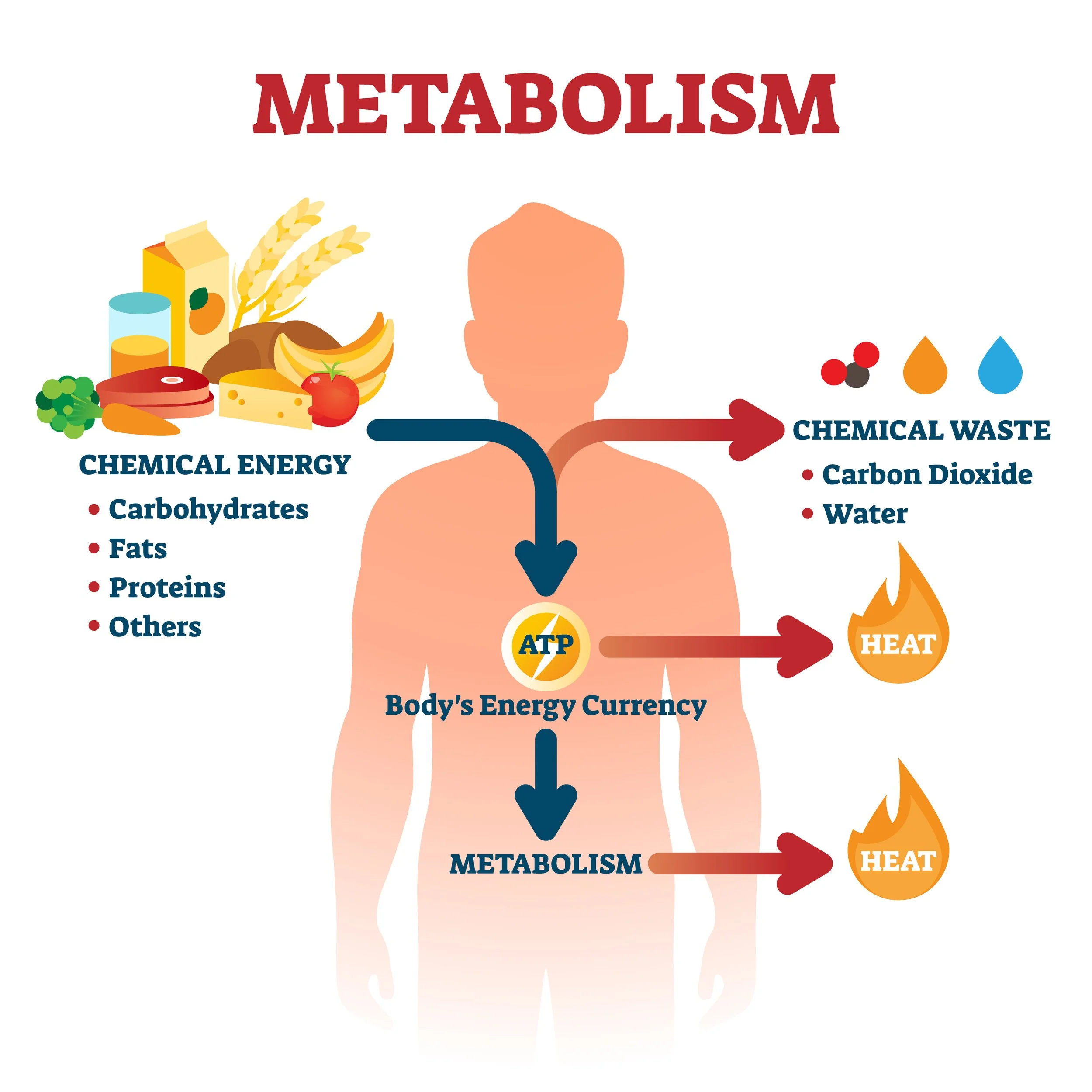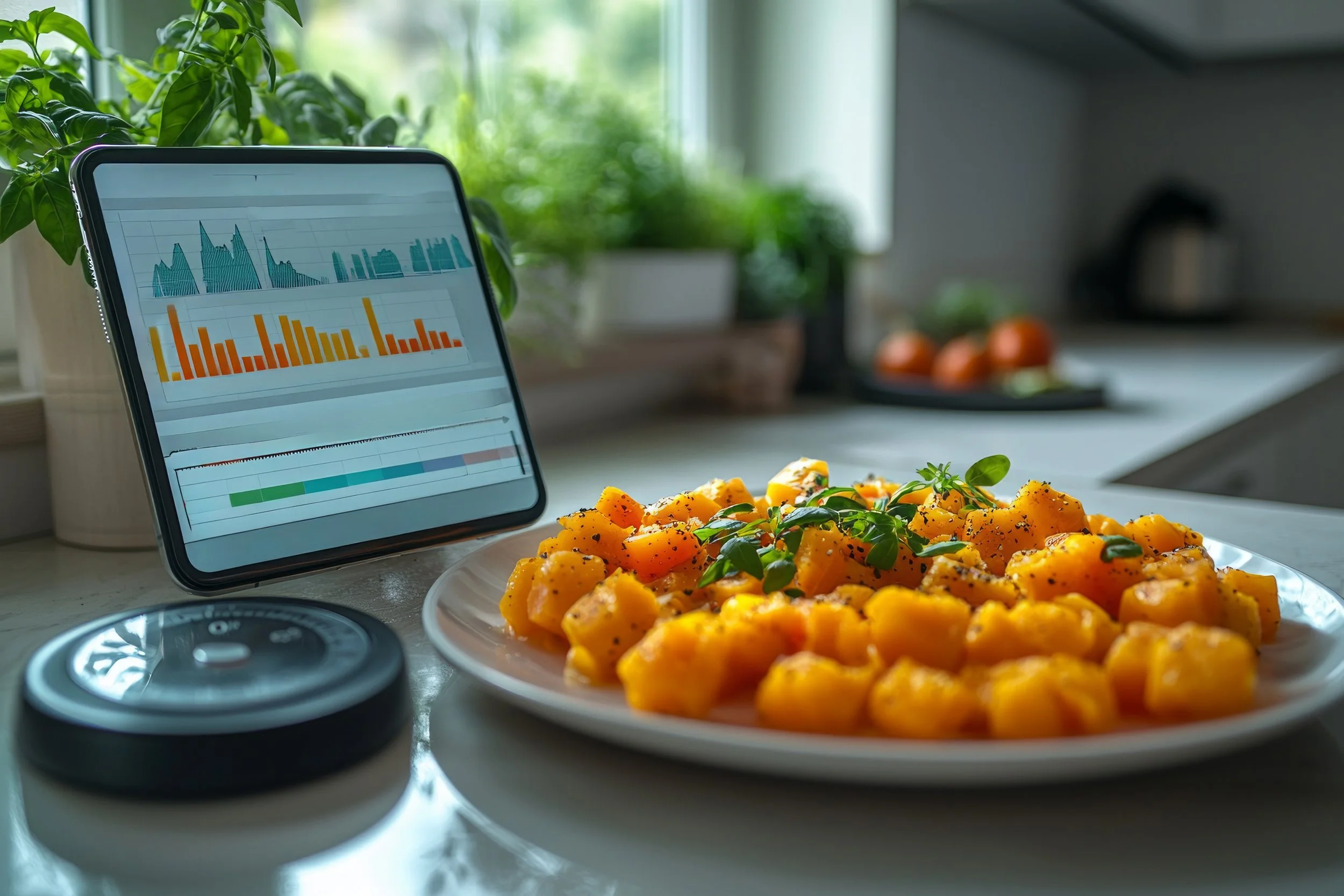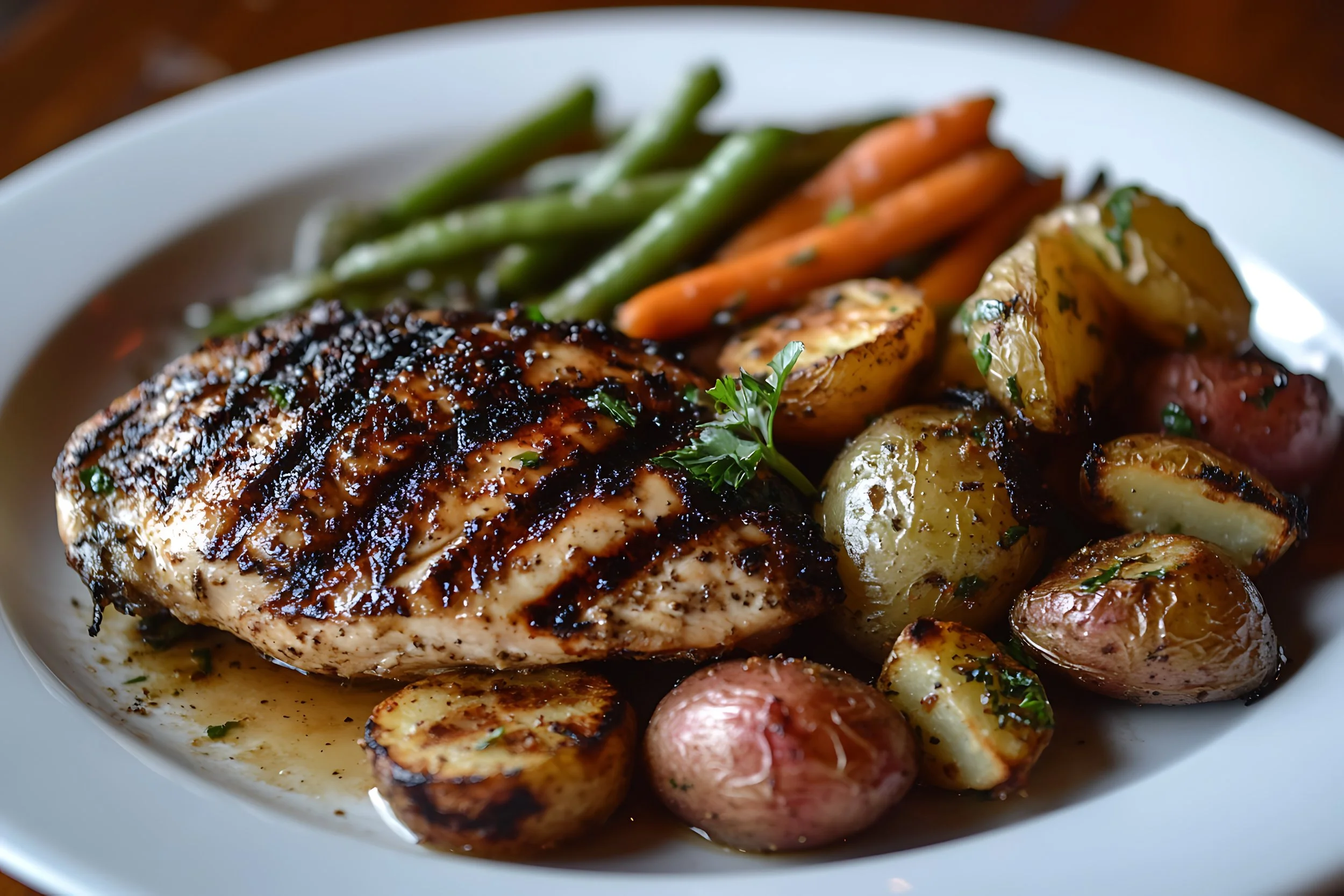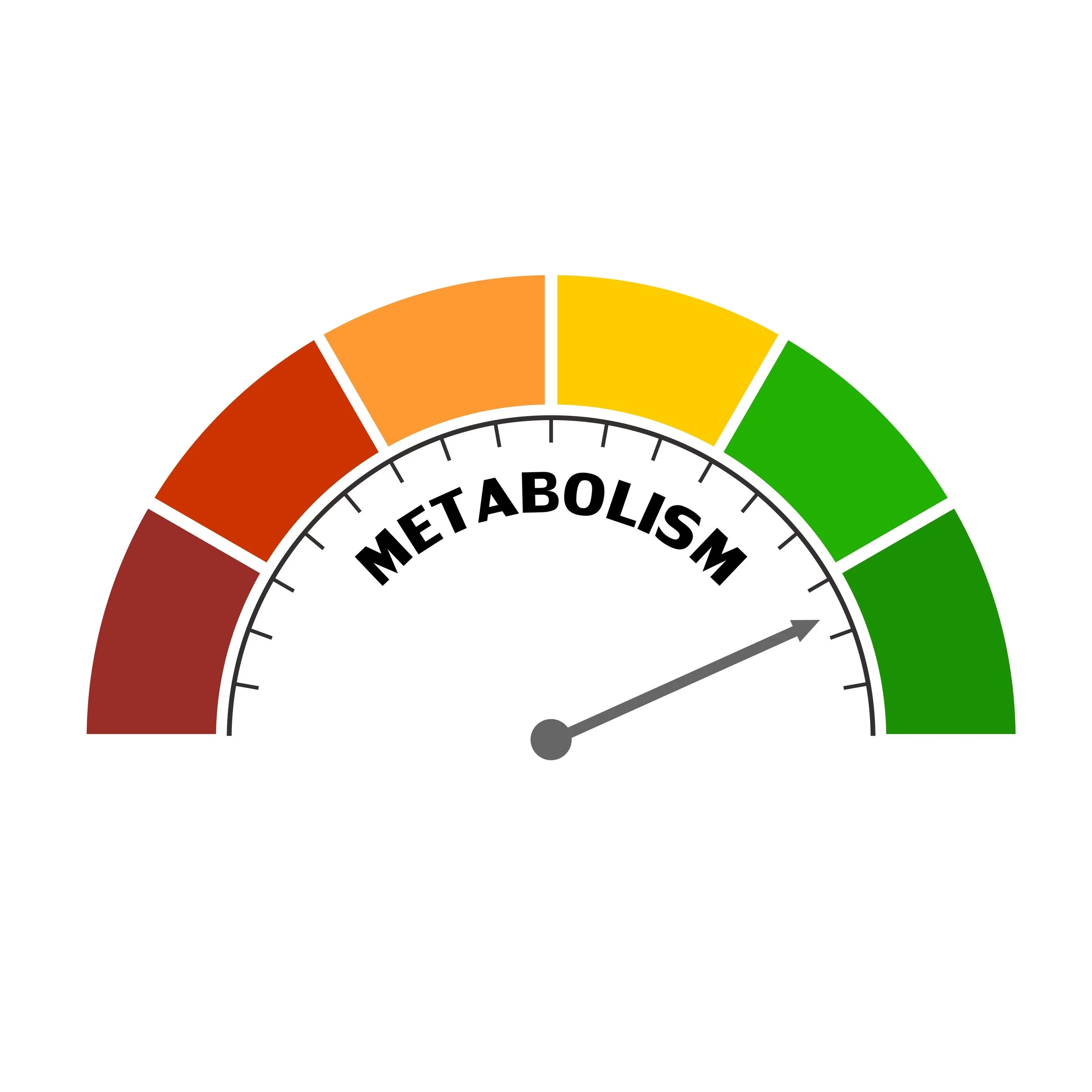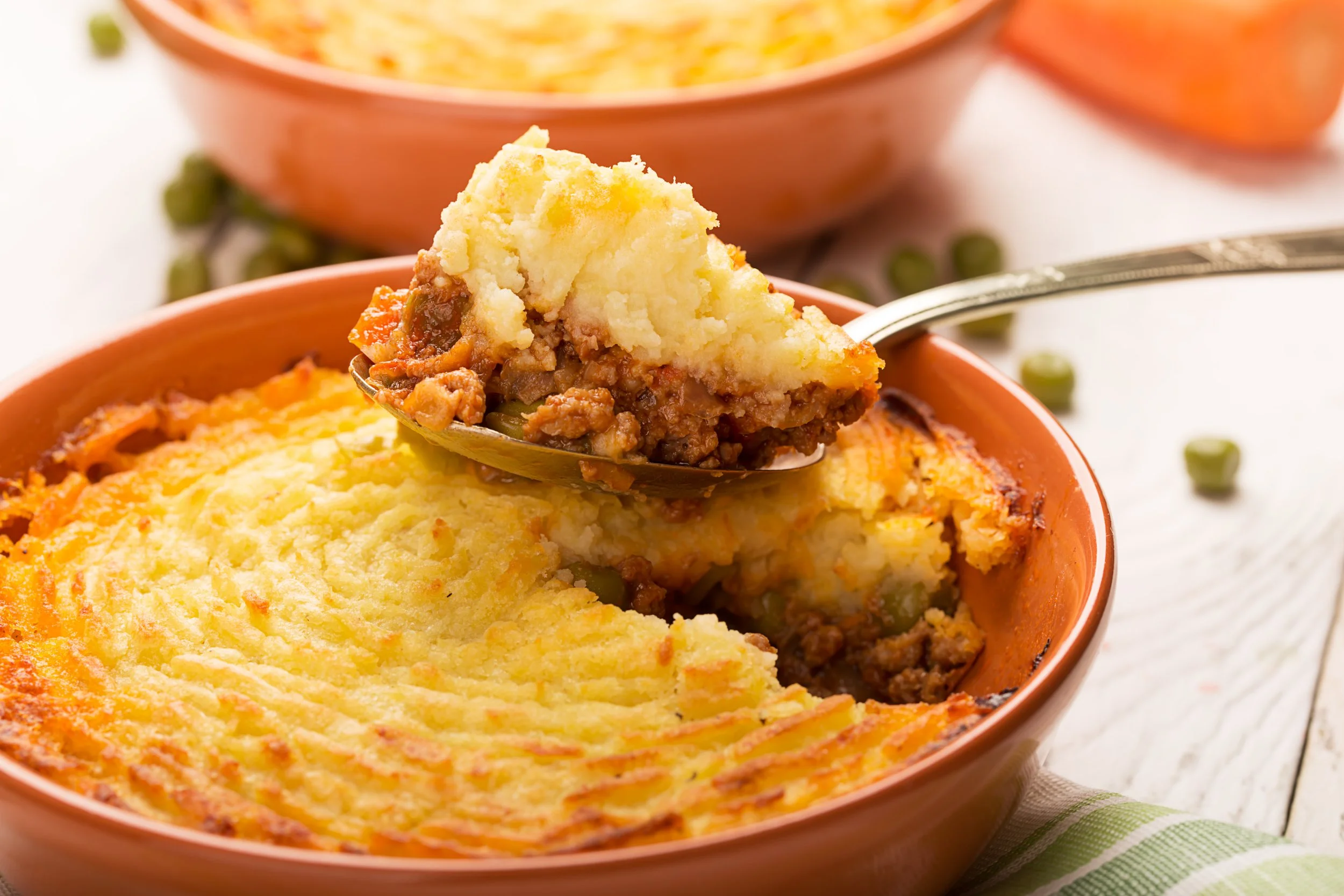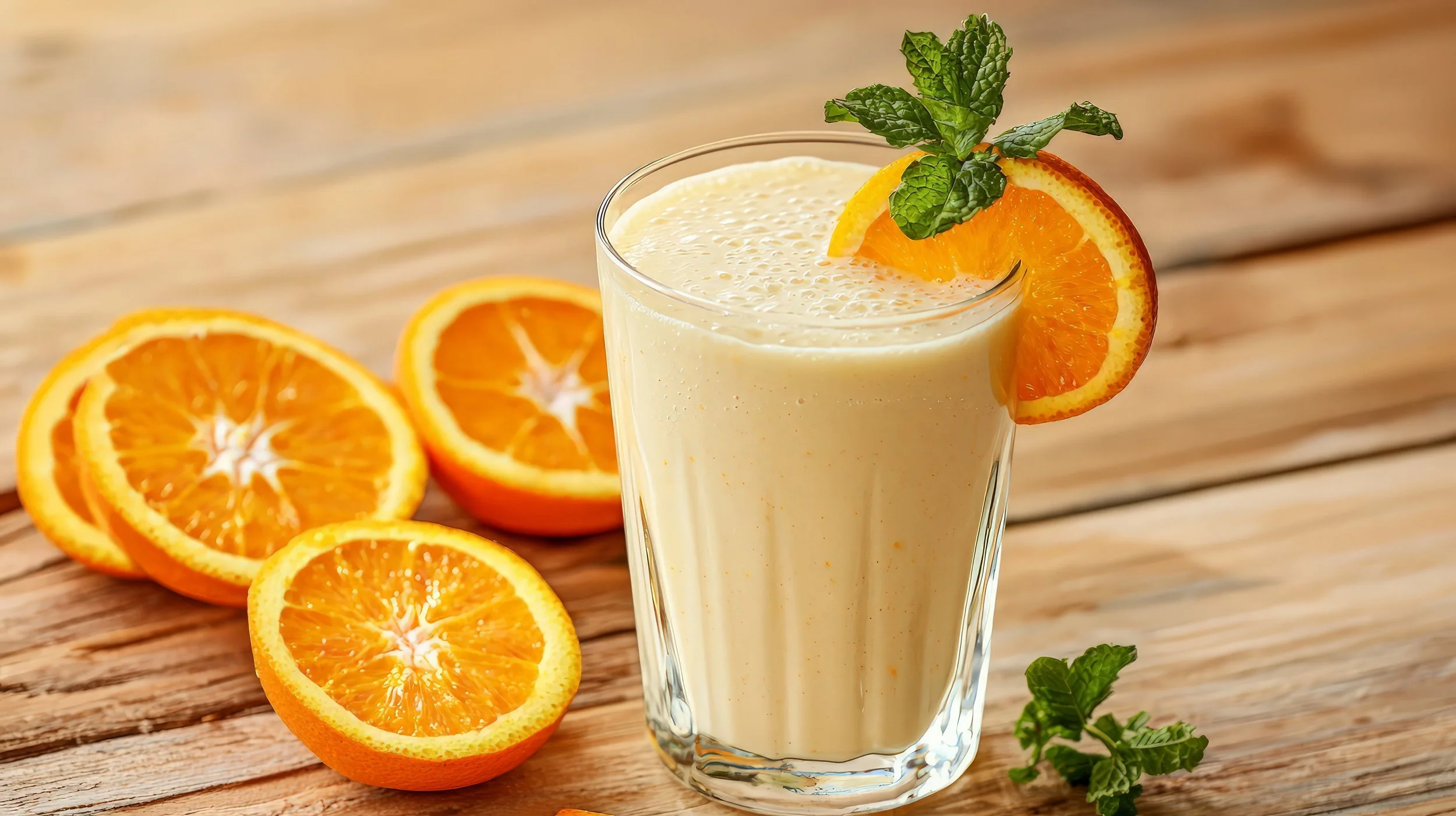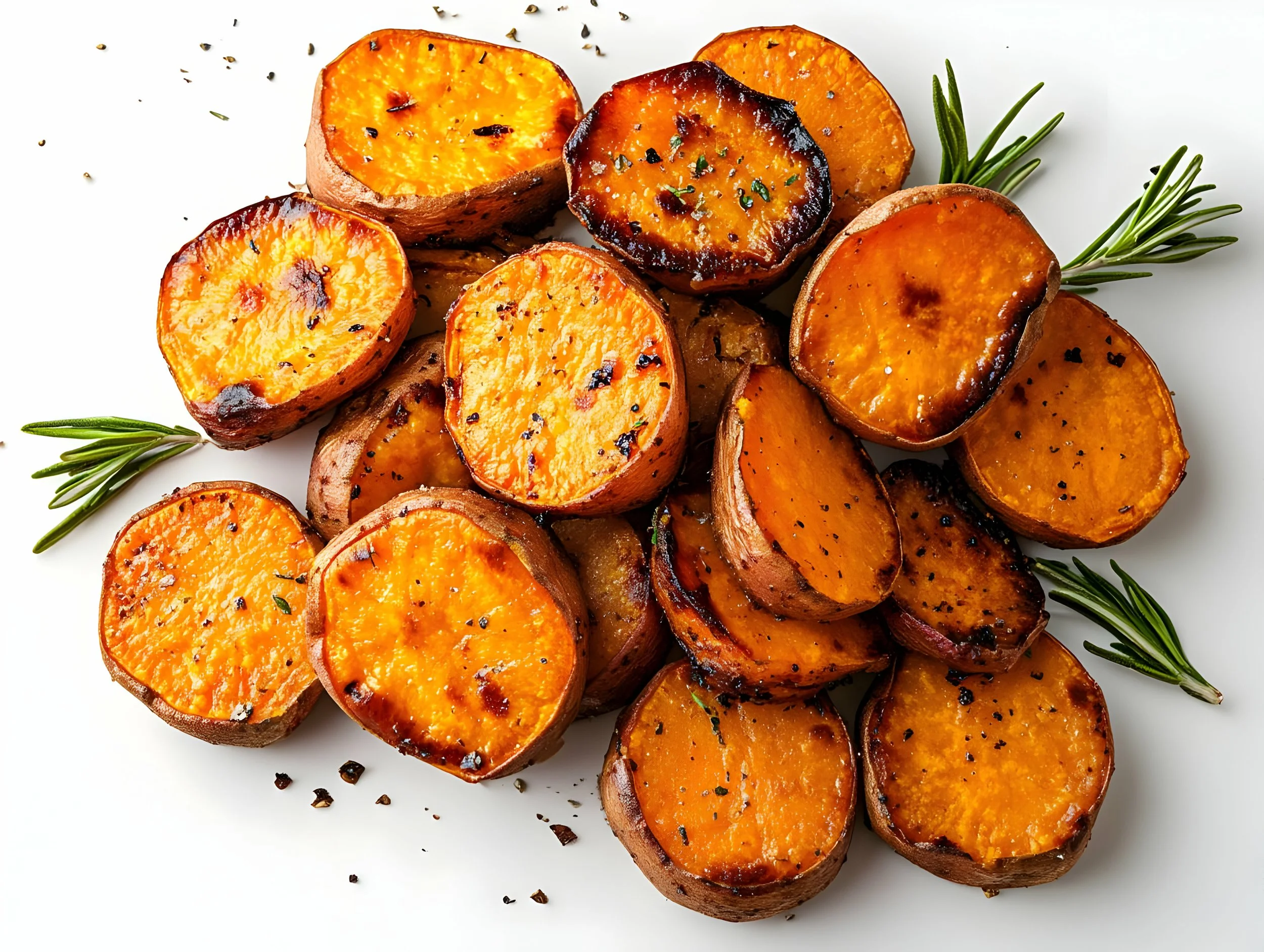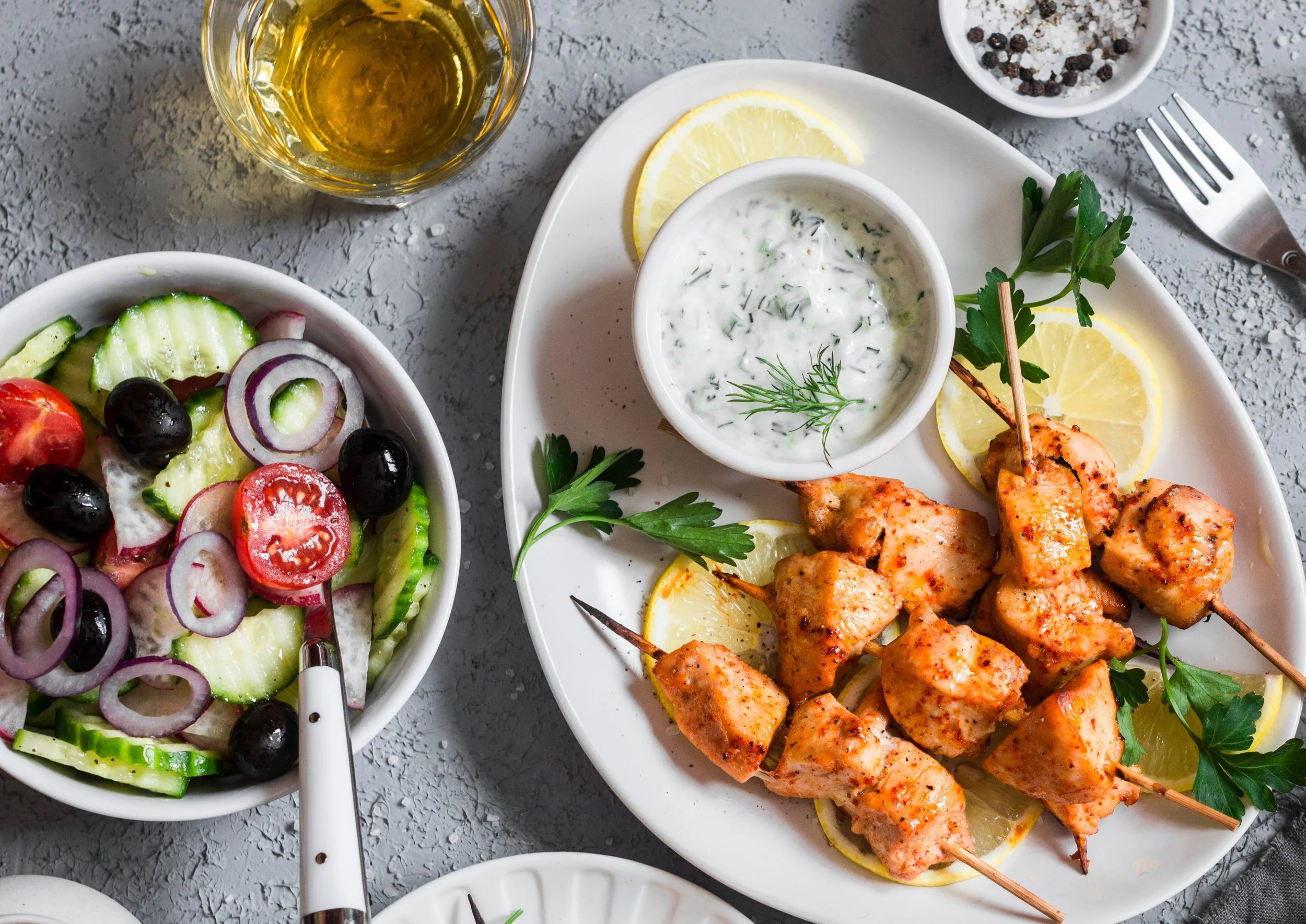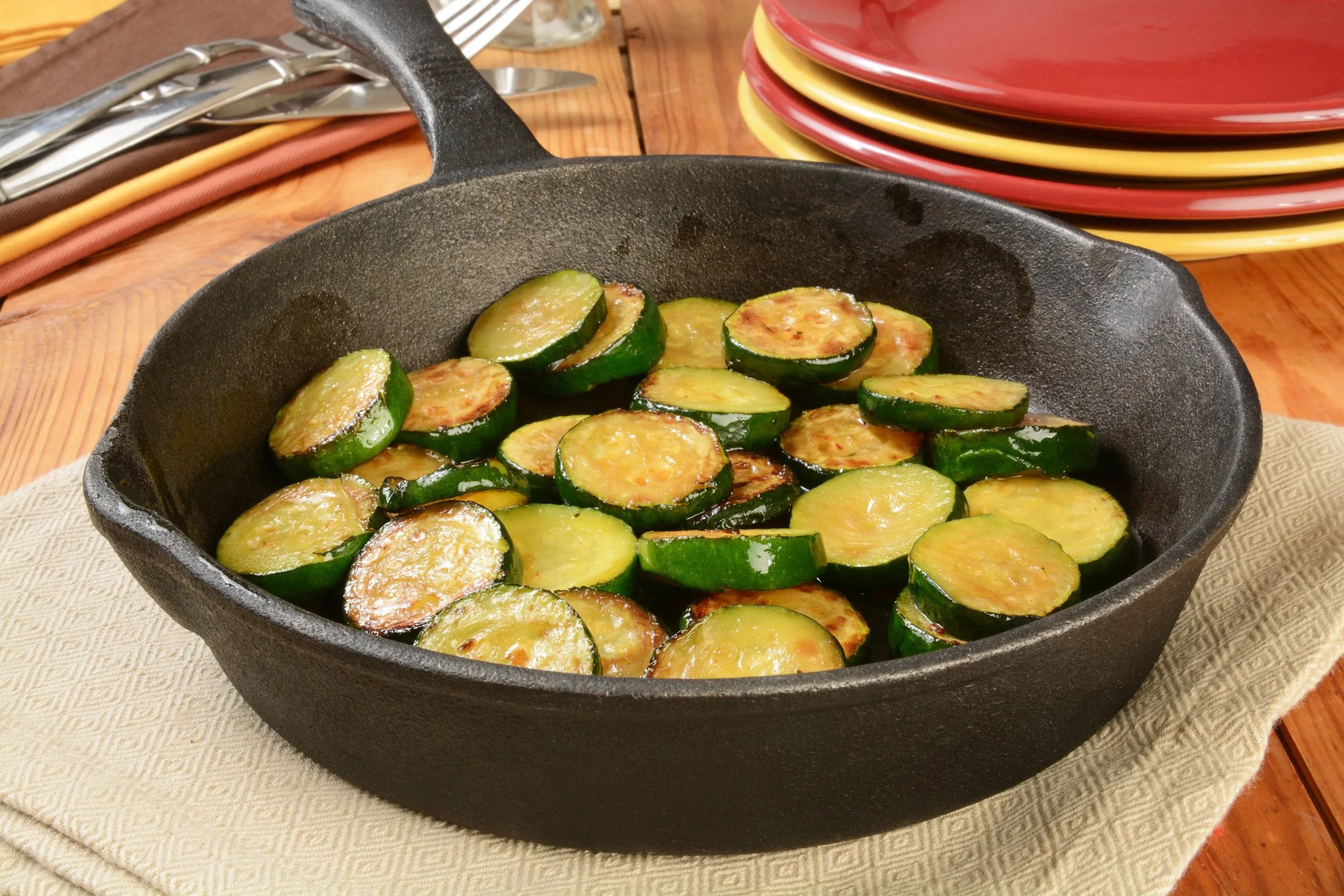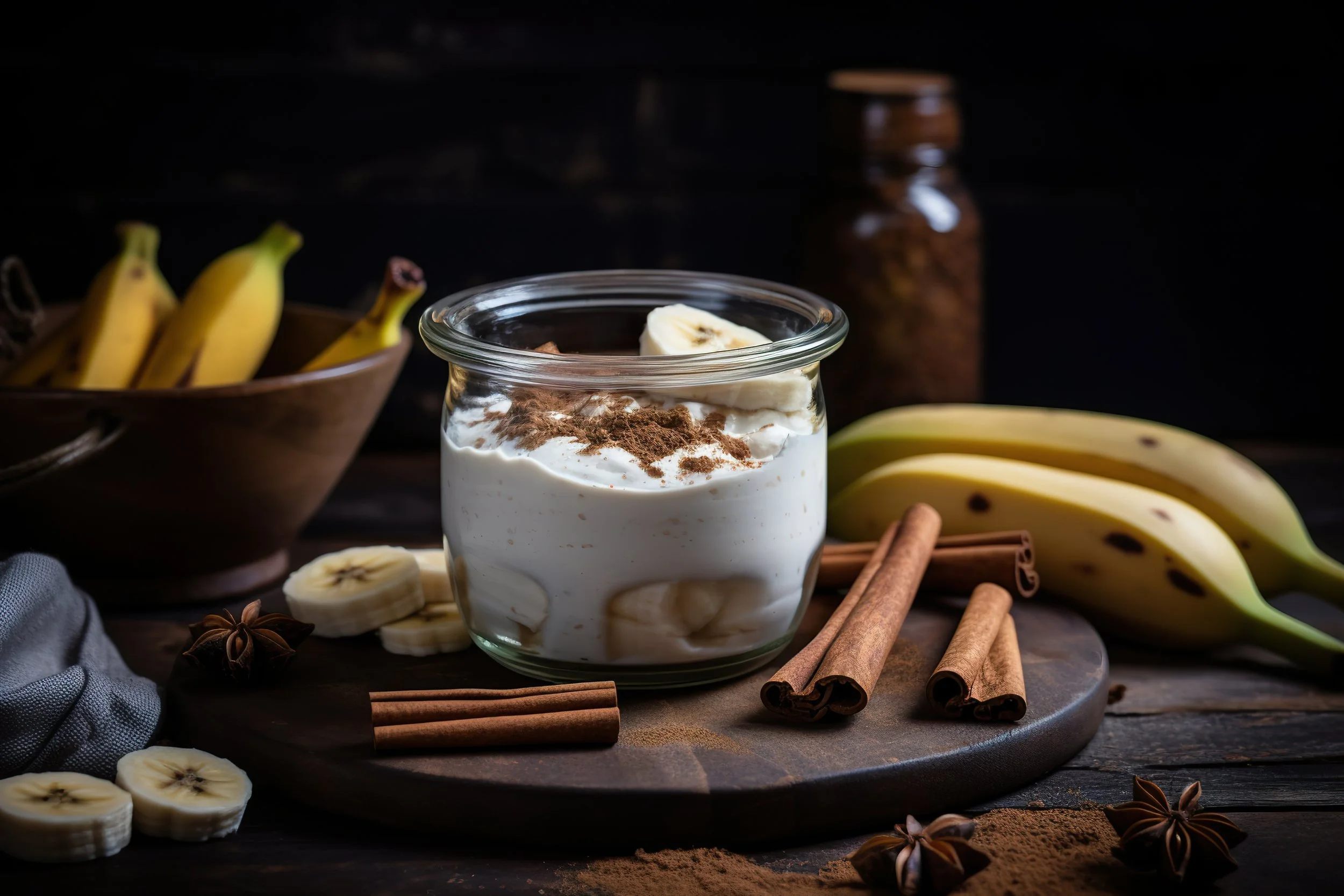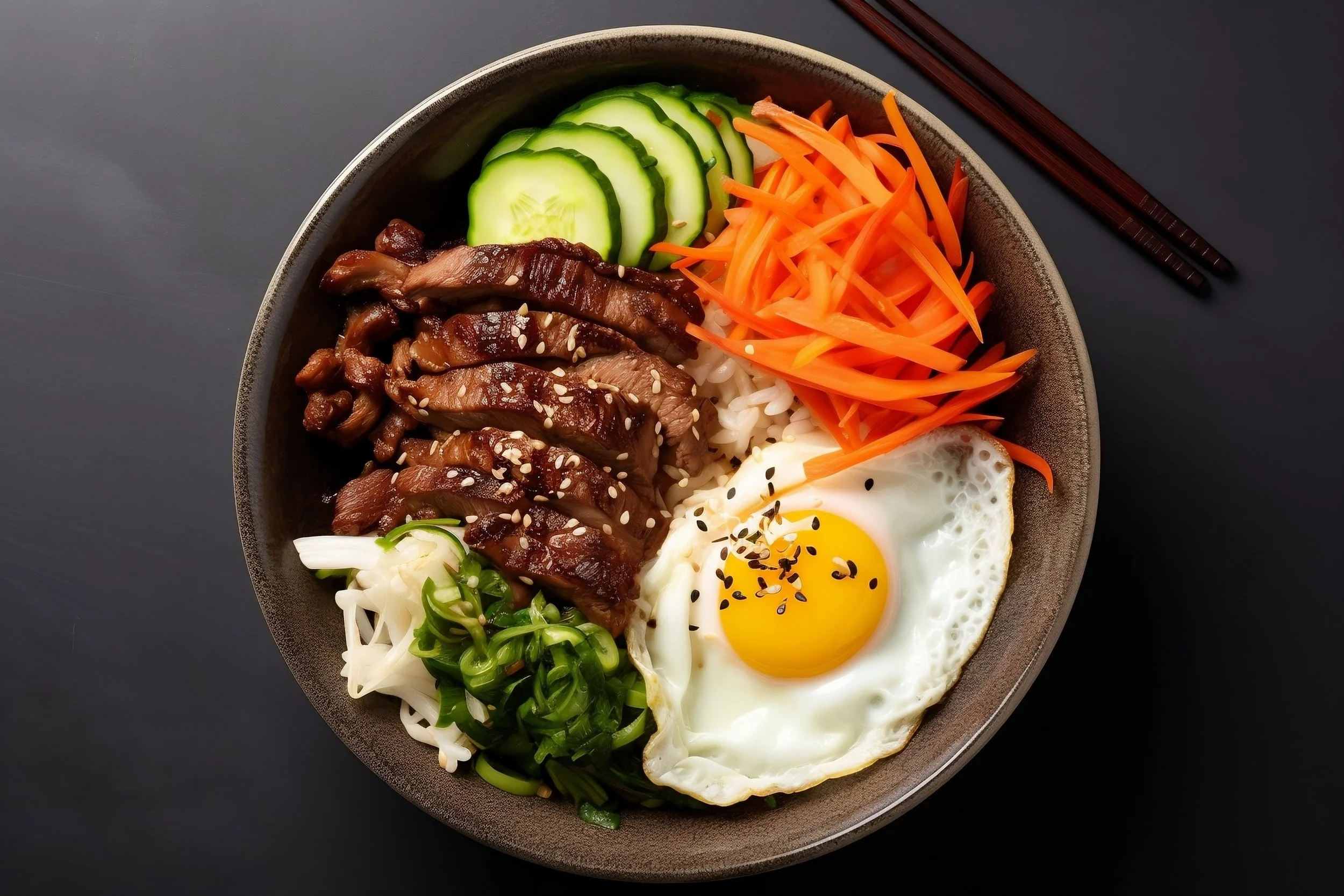🔥 Why Eating More Might Be the Best Thing You Can Do for Your Metabolism
🧬 What Is Energy Availability (EA) and Why Does It Matter?
If you’ve been cutting calories, skipping meals, or living off caffeine and willpower—but still feel tired, cold, bloated, or stuck—it’s not just you. And it’s not your fault. For decades, women have been told to eat less, move more, and avoid sugar at all costs. But modern science (and old-school common sense) tells a different story: your body needs fuel—real, consistent fuel—to thrive.
That’s where Energy Availability (EA) comes in. It’s a scientific way to describe how much energy your body has left over after exercise to run all the things that actually keep you alive: thyroid hormone production, detoxification, digestion, menstrual cycles, sleep, brain function, and immunity. When EA is too low, your body doesn’t have enough left to run those systems, so it starts downshifting—hard.
Most modern Americans—especially women—aren’t even close to meeting minimum EA. Compared to our ancestors and even our 1950s-era grandparents, we eat fewer calories, far less carbohydrate, and often fear sugar while overconsuming fat. This cultural shift, combined with chronic stress and government-endorsed low-calorie guidelines, has contributed to widespread metabolic suppression, thyroid dysfunction, fatigue, digestive issues, food sensitivities, and even chronic disease. Low Energy Availability is often the root cause—hidden beneath the surface of good intentions and “clean eating.” If you’ve ever felt like you’re “doing everything right” but still experiencing fatigue, sleep disturbances, or hormonal chaos, there’s a high chance you’re not hitting your EA.
🔬 Defining Energy Availability
Energy Availability is the amount of dietary energy left over for your body to run all its internal systems after you’ve accounted for exercise. In other words, it’s what’s left to support your thyroid, fertility, digestion, brain function, and immune system after movement is subtracted.
Scientifically, it’s defined as: EA = (Energy Intake - Exercise Energy Expenditure) / Lean Body Mass (kg)
Research suggests that a minimum of 45 kcal per kilogram of lean body mass (LBM) is required to maintain full physiological function in females. Anything under 30 kcal/kg LBM is considered Low Energy Availability (LEA), a state that induces metabolic suppression and hormonal dysfunction. (Loucks et al., 1998)
This is especially relevant for women who have dieted chronically, come from keto or intermittent fasting backgrounds, or engage in high levels of exercise.
🍽️ How We Got Here: Modern Eating vs. Ancestral Fueling
Modern Americans are eating far less energy—and far less carbohydrate—than our ancestors or even our grandparents. Post-WWII nutrition advice began to shift public perception toward fear of sugar and cholesterol, promoting high-fat, low-carb eating patterns and chronic caloric restriction.
Government dietary guidelines—like the 1,200–1,600 calorie "weight loss plans" pushed on women—have normalized under-eating. These intake levels, combined with stress, blue light exposure, and stimulant overuse (coffee for breakfast, anyone?), mean most people are running on fumes.
Compare that to the 1930s–1950s, when women often ate 2,400–2,800 calories daily, relied on carbohydrates like milk, fruit, potatoes, and sourdough, and had far less metabolic disease.
🧠 What Happens When EA Is Too Low?
When you don’t eat enough to meet your energy needs, the body compensates. Hormones drop. Cortisol rises. Non-essential systems—like reproduction and digestion—get dialed down to conserve resources.
Common symptoms of LEA include:
Insomnia, especially waking at 2–4 a.m.
Low libido, infertility, or missing periods
Cold hands and feet
Anxiety or depression
Constipation and bloating
Weight loss resistance despite low intake
Weak immunity and poor wound healing
From a functional medicine perspective, low EA often underpins issues like hypothyroidism, estrogen dominance, and adrenal fatigue. You can’t out-supplement an energy deficit.
🧮 How to Calculate Your EA (and Fix It)
Estimate your Lean Body Mass (LBM): This can be measured using InBody scans, DEXA, or estimated based on body fat %.
Multiply LBM (in kg) by 45: This is your minimum intake goal in kcal/day.
Example: A woman with 50 kg LBM needs at least 2,250 kcal/day.
Add back food slowly if you’ve been under-eating: Reverse dieting is a strategic way to avoid weight gain while restoring EA.
Minimize cardio: Excess cardio drains available energy and prolongs LEA. Focus on strength training and low-intensity walking or Zone 2 movement.
Track consistently: Use tools like Cronometer to ensure you're hitting total calories. Prioritize meeting energy first, then macros.
📚 Scientific References
Loucks, A. B., et al. (1998). Energy availability, not body fatness, regulates reproductive function in women. Exercise and Sport Sciences Reviews.
Mountjoy, M., et al. (2014). Relative Energy Deficiency in Sport (RED-S) Consensus Statement. British Journal of Sports Medicine.
Melin, A., et al. (2015). Energy availability and the female athlete triad in active women. Clinical Journal of Sport Medicine.
✅ Final Thoughts: EA Is the Foundation
You can’t rebuild your metabolism, restore your hormones, or heal your gut if you’re operating from a place of scarcity.
Energy Availability is the bare minimum—not a luxury. And while the mainstream may still push "eat less, move more," the science is clear: under-eating doesn’t just slow weight loss, it shuts down vitality.
Start by fueling generously, tracking accurately, and honoring your body's demand for nourishment. Reaching your EA is the difference between surviving and thriving. 💪
🛏️ Sleep Like a Metabolic Champ
Pro-Metabolic Strategies for Deep, Restorative Sleep
😴 Sleep is not a luxury. It's one of the most metabolic processes your body performs. If you're waking up at 2–3 a.m., tossing and turning, or dragging yourself through the day, your sleep setup—and your metabolism—needs an overhaul.
Here’s how to dial in sleep support using science-backed and pro-metabolic principles:
🌞 Support Your Circadian Rhythm
Get sunlight first thing in the morning—at least 10 minutes outdoors helps anchor your circadian rhythm.
Use incandescent light bulbs during the day (avoid LEDs and CFLs), which mimic natural light and support energy without damaging blue light.
No screens 1 hour before bed—phones and TVs blast your brain with cortisol-spiking blue light.
Switch to amber light bulbs or red night lights in your bedside lamp and bathroom at night.
Consider blue light-blocking glasses after sunset if screen use is unavoidable.
🌡️ Create a Sleep Sanctuary
Keep your room cool and dark—ideal temperature is 65–68°F.
Use blackout curtains, turn off or cover any blinking lights, and ban all electronics from the bedroom.
No nightlights unless they’re red/amber spectrum only (and low wattage).
🍯 Balance Your Blood Sugar for Sleep
Night wakings (especially between 2–4 a.m.) are usually a cortisol response to low glycogen.
Eat a bedtime snack with carbs, protein, and salt to keep blood sugar stable through the night (e.g., warm milk + honey + pinch of salt).
Avoid fasting or under-eating, especially if your total daily calories are below your minimum energy availability.
🧠 Calcium, Cortisol & Melatonin
Calcium is a precursor to melatonin, and many women in LEA are deficient.
Prioritize calcium-rich pro-metabolic foods: dairy, sardines, bone broth.
If needed, supplement with food-based calcium (not citrate).
If you're in low energy availability (LEA) or hypothyroid, insomnia is often your body screaming for nourishment.
💥 Low Energy = Low Sleep Quality
Chronically low food intake leads to high cortisol, low melatonin, poor thyroid function, and restless sleep.
Track your intake and make sure you're eating enough—especially carbs.
Avoid extreme low-carb or low-fat diets; both impair sleep quality.
✅ Your Pro-Metabolic Sleep Checklist
☀️ Morning sun + incandescent light during the day
🧠 Amber or red light at night
📴 No screens 1 hour before bed
🌡️ Cool, dark, tech-free bedroom
🥛 Bedtime carb + protein + salt snack
🧀 Daily calcium-rich foods
💤 Hit your calorie target to avoid LEA
Sleep isn’t just about rest—it’s a reflection of your metabolic status. Optimize it, and you’ll feel the difference in your energy, mood, and healing speed.
Sleep like your metabolism depends on it—because it does. 🌙✨
✨ How to Track Like a Pro with Cronometer
💪A Step-by-Step Guide to Hitting Your Macros and Mastering Metabolism
🌿 If you're ready to take your nutrition seriously—whether it's for weight loss, metabolic repair, gut healing, or simply getting your energy back—mastering Cronometer is non-negotiable. 🚀 Here's how to set yourself up for success and avoid the pitfalls that sabotage most people's progress.
📊 Set Your Targets
Before you track anything, you need a clear destination. That means setting your calories and macros with intention—not guessing.
Start with calories. ⏳
Use your current weight, estimated body fat %, and goals to determine your energy target. For many clients, we start with reverse dieting toward their minimum Energy Availability (EA), calculated as 45 kcal/kg of lean body mass.
Then set macros.
🍗 Protein: 1 gram per pound of lean body mass (LBM) is the standard. Higher if underweight or coming off long-term restriction.
🥑 Fat: Start with 12–25% of total calories. Go low (around 12–15%) if you're trying to lose fat or address gut issues.
🍓 Carbs: Fill in the remaining calories with high-quality, easy-to-digest carbs. For most people, this is a slow climb up.
📲 Set Up Cronometer Correctly
Go to Settings > Targets > Energy Target.
Use "Custom Energy Target" and set it to your daily calorie goal.
Go to Settings > Targets > Macronutrient Targets.
Enable "Fixed Values" so Cronometer doesn’t auto-adjust.
Choose "Custom" and input your exact targets (grams, not %).
🍽️ Build Custom Meals and Recipes
Make life easier by creating your go-to meals and snacks:
Under Foods > Custom Recipe, enter your breakfast smoothie, lunch salad, etc.
Weigh everything once, input it once, and reuse it daily.
Include common toppings and extras (e.g., butter on potatoes 🥔, honey in yogurt 🧁).
⚖️ Track Meals Strategically
Aim to hit at least 70% of your daily protein and carb targets by lunch or afternoon snack.
Save some fat for dinner and your bedtime snack—especially if you're on a low-fat protocol (e.g., <40g/day).
Use the "Consumed" button until lunch to see how your %s are building.
After lunch, switch to "Remaining" to visualize what macros you still need to hit with dinner and the bedtime snack.
✨ Hit Your Macros with Precision
Strive for 99–101% accuracy on all macros—protein, carbs, fat, and total calories.
If there’s a mismatch between your macro totals and calorie totals, it’s usually due to bad food database entries. Be sure to hit your calorie goal!
Any leftover calories at the end of the day should be assumed to come from carbohydrates. Don't try to "fix" it by adding protein or fat.
🌙 Nighttime Check-In: Finish Strong
Always check your totals by dinner.
Adjust final meals/snacks to meet macros exactly.
Prioritize a bedtime carb + protein + salt snack to stabilize cortisol and support deep sleep (e.g., milk + honey + pinch of salt). 🥛🍯=sleep magic.
✅ Final Priorities
🔥 Meet your calorie target. This is non-negotiable. Under-eating by even 100 kcal/day adds up fast.
🎯 Meet each macro within 1%. This ensures hormonal balance, recovery, and energy.
Done right, this makes tracking second nature—and turns your metabolism into a finely tuned engine. 🚀
Stay consistent. Stay meticulous. And stay metabolically strong.
🌾 Sprouted Oatmeal (Soaked + Simmered)
Sprouted oats can be a gentle, nourishing way to reintroduce grains on a pro-metabolic protocol—especially when properly prepared. Unlike conventional oatmeal, this method respects digestion by neutralizing anti-nutrients through soaking and using sprouted grains, which are naturally lower in phytic acid. When paired with metabolically supportive ingredients like raw milk, honey, and a touch of saturated fat, this bowl becomes a warming, blood sugar–friendly option that’s easy on the gut and aligned with ancestral wisdom.
Serves: 1
Prep time: 5 minutes (+ overnight soak)
Cook time: 5–10 minutes
🛒 Ingredients
½ cup sprouted rolled oats (ideally organic)
½ cup filtered water or skim milk
1 tsp apple cider vinegar (or lemon juice)
Pinch of sea salt
Optional (add after cooking):
¼–½ cup milk (skim, low-fat, or raw)
1–2 tsp honey or maple syrup
1 pat butter (optional for those not on low-fat)
Dash of cinnamon or vanilla
Pinch of collagen powder (stir in gently)
Handful of berries, sliced banana, or stewed apple
🥣 Instructions
1. Night Before: Soak the Oats
In a glass jar or bowl, combine:
½ cup sprouted oats
½ cup water or skim milk
1 tsp apple cider vinegar
Stir, cover lightly, and let sit at room temp overnight (8–12 hours).
2. Morning: Drain & Rinse
Drain and rinse the oats with warm water to remove excess phytic acid and sour flavor.
3. Simmer
Add the soaked oats to a small saucepan with:
½ cup fresh water or milk (more if you prefer looser oats)
Pinch of sea salt
Bring to a simmer and cook gently for 5–10 minutes, stirring often, until soft.
4. Customize
Turn off the heat and stir in any desired additions:
Extra milk for creaminess
Honey or maple for sweetness
Cinnamon or vanilla for flavor
A small pat of butter for richness
Collagen or fruit for protein and carbs
🍽 Notes
Sprouted oats are gentler on digestion and higher in bioavailable nutrients than unsprouted.
The overnight soak with ACV helps further neutralize anti-nutrients like phytic acid.
Keep fat minimal if using this during a cut — skip the butter and use skim milk.
For higher-protein versions, stir in collagen or pair with a scoop of low-fat Greek yogurt on the side.
Why I Don’t Recommend Nuts, Seeds, Grains, or Legumes
Nuts, seeds, whole grains, and legumes are often promoted as health foods — packed with fiber, protein, and “healthy fats.” But if you're dealing with gut issues, low thyroid function, hormone imbalances, or chronic fatigue, these are the last foods you want in your diet.
Behind the wellness branding is a harsh biological reality: seeds are the most chemically defended foods in nature. And your body knows it.
🌱 They're All Seeds — and That’s the Problem
Whether you’re eating almonds, oats, black beans, or quinoa, you’re eating a seed. From an evolutionary standpoint, seeds are how plants reproduce — and they don’t want to be eaten. So they defend themselves with compounds designed to injure or deter predators.
In humans, that means:
Phytic acid — binds to essential minerals like zinc, magnesium, and iron, making them unavailable
Lectins & saponins — damage the gut lining and increase intestinal permeability
Enzyme inhibitors — impair digestion and reduce protein absorption
PUFAs (omega-6 linoleic acid) — suppress thyroid function, slow metabolism, and promote inflammation
These defenses don’t just block nutrients — they actively signal danger to your gut, liver, and endocrine system.
🦠 Gut Damage Starts Here
The modern rise in autoimmune disease, food sensitivities, IBS, and even anxiety and depression is directly linked to gut integrity. And seed foods are one of the primary offenders.
Their anti-nutrients inflame and weaken the intestinal lining, feed dysbiotic microbes, and block the nutrients your gut needs to repair itself.
If you’re using biofilm disruptors, antimicrobials, motility agents, or collagen — but still eating seeds — you’re working against yourself. I’ve seen client after client stay stuck in their healing until we remove nuts, seeds, grains, and legumes completely.
🔥 PUFA: The Root of Modern Disease
Polyunsaturated fats — especially omega-6 linoleic acid from seeds — are the single most damaging input in the modern diet. These oils are not just linked to hormone issues or sluggish thyroid. They are a primary driver of all chronic disease: obesity, diabetes, cancer, heart disease, autoimmune conditions, infertility, neurodegeneration, and more.
PUFAs are highly unstable and oxidize easily, creating cellular damage, mitochondrial dysfunction, and chronic inflammation at every level of the body.
Here’s what linoleic acid — the dominant omega-6 fat in seeds and seed oils — does to your system:
Inhibits the conversion of T4 to active T3 (slowing thyroid output)
Increases estrogen and lowers progesterone
Suppresses fat burning and increases fat storage
Damages mitochondrial respiration
Drives oxidative stress and inflammatory cascades
Alters cell membrane function and impairs detoxification
Sunflower seeds and almond butter are surprisingly concentrated sources of linoleic acid — the same inflammatory omega-6 fat found in industrial seed oils. A tablespoon of sunflower seeds contains roughly 4–5 grams of linoleic acid, while almond butter provides around 2–3 grams. For comparison, a tablespoon of soybean oil contains about 7 grams. These ‘health foods’ can quietly add up, pushing your total PUFA intake into disease-promoting territory — even without touching a bottle of oil.
Chronic disease formation begins when daily linoleic acid intake exceeds 5–10 grams. But studies show that insulin sensitivity can return within 30 to 90 days when total LA intake drops below 5 grams per day. Since even high-quality whole foods like eggs, poultry, and red meat contain small amounts, most people are already halfway to that limit — meaning there’s no margin for seeds, nut butters, or hidden oils if healing is the goal.
PUFAs are the Trojan horse of the modern health food industry — and until they’re removed, true healing remains out of reach.
🦜 You’re Not a Bird — You Don’t Have a Gizzard
Birds evolved a gizzard — a muscular organ that grinds up seeds with swallowed stones. Some animals produce enzymes that help them break down seed-based toxins. Humans have neither.
Most wild seeds are toxic or indigestible to humans in their raw state. Without processing, they are unsuitable as a regular food source. We simply don’t have the anatomy or enzymatic profile to eat them safely in large quantities.
🌍 What Traditional Cultures Knew
Ancient peoples were aware of this — and they respected seeds accordingly. Over generations, they developed methods to reduce seed toxicity: soaking, sprouting, fermenting (like sourdough), nixtamalizing corn, or removing the anti-nutrient-rich bran from rice to produce more digestible white rice.
Even with these precautions, seeds were never the centerpiece of ancestral diets. They were backup foods — used in times of scarcity, to stretch calories, or consumed in small, infrequent amounts.
The modern obsession with seed-based foods — nut milks, oat bars, flax smoothies, chickpea pasta — is completely unprecedented. And it’s come with a cost: metabolic collapse, digestive disease, hormonal breakdown, and chronic fatigue.
🧠 Hormones, Mental Health, and the Gut-Brain Axis
The damage seeds do isn’t just physical. Seed toxins affect neurotransmitter synthesis, stress hormone regulation, and blood sugar stability — all of which impact mental health. Gut permeability (leaky gut), triggered by lectins and saponins, allows inflammatory compounds into the bloodstream and brain, driving symptoms like brain fog, mood swings, anxiety, and insomnia.
PUFAs, meanwhile, suppress progesterone and promote estrogen dominance — a hormonal pattern tied to PMS, infertility, low libido, and autoimmune flares.
🚫 What to Do While You’re Healing
If you’re actively working to rebuild your gut, restore thyroid function, or reverse chronic illness, seeds don’t belong in your diet. Even properly prepared versions — sprouted oats, sourdough, white rice, nixtamalized corn — should be minimized until your digestion, hormones, and immune function are stable.
Once your system has healed, you may tolerate a small percentage of your calories from traditionally prepared seed foods — just as our ancestors did. But during the healing phase, the fastest results come from removing them entirely.
✅ What to Eat Instead
A true healing diet is anti-inflammatory, pro-digestive, and metabolically supportive:
Pro-metabolic proteins: dairy, collagen, bone broth, eggs, high-quality meats
Digestible carbs: ripe fruit, honey, maple syrup, white rice, cooked potatoes
Safe fats: butter, coconut oil, cacao butter
Gut support tools: gelatin, mineral salt, raw carrot, and targeted antimicrobials
This approach supports the gut lining, balances blood sugar, restores hormone production, and increases energy — without the inflammatory baggage of seeds.
🔊 Ray Peat Wisdom
“Nuts and seeds are rich in unsaturated fats and enzyme inhibitors, which are stressful to the body and interfere with digestion.”
“Plants don’t want you to eat their seeds — that’s why they load them with toxins, allergens, and irritants.”
“The increase in degenerative diseases in the 20th century parallels the increase in seed oil consumption.”
⚡ Final Thought
Seeds are not sacred — they’re plant defense mechanisms. If you’re struggling with gut issues, metabolic slowdown, hormone imbalance, or unexplained fatigue, seed foods are a hidden driver of stress.
Remove them, rebuild your system, and you’ll be shocked at how quickly things start working again.
Want help creating a seed-free, gut-healing, pro-metabolic plan?
Book a consult. I’ll show you how we combine collagen, anti-microbials, food-based healing, and macro strategy to help your body finally heal.
Masa Pancakes
These are the ultimate metabolism-supporting pancakes—warm, fluffy, gut-friendly, and completely free of added fats. Perfect for anyone healing their liver, recovering from keto, or just looking for a high-carb, low-fat breakfast that doesn’t feel like diet food. Made with masa harina and sweetened with maple, they deliver the flavor and texture you want, without any butter or oil in the batter.
🌽. Masa harina is a traditional flour made from corn that has been nixtamalized—soaked and cooked in lime (calcium hydroxide)—which enhances its nutrient bioavailability, increases calcium content, reduces phytic acid, and makes it easier to digest, making it a gut-friendly, mineral-rich, and ancestral source of resistant starch and glucose.
🍽 Yields:
~14 pancakes (4-inch)
🌟 Ingredients
2½ cups low-fat buttermilk
(or 2¼ cups low-fat milk + 2 Tbsp lemon juice or ACV)1½ cups heirloom masa harina (nixtamalized, e.g., Masienda or King Arthur)
2 tsp aluminum-free baking powder
½ tsp kosher salt
1½ tsp ground Ceylon cinnamon
2 tsp vanilla extract
2 large eggs (or 4 egg whites for even lower fat)
¼ cup pure maple syrup
🔧 Directions
Make buttermilk (if needed):
Stir lemon juice into milk and let sit for 5–10 minutes.Mix dry ingredients:
In a bowl, whisk masa harina, baking powder, salt, and cinnamon until lump-free.Whisk wet ingredients:
In a large bowl, whisk eggs (or whites), maple syrup, vanilla, and buttermilk until smooth.Combine:
Stir the dry mix into the wet until just combined. Don’t overmix—batter will be thick but scoopable.Cook:
Heat a nonstick or ceramic skillet over medium. Lightly grease with a small amount of butter or oil (just enough to prevent sticking—this adds only trace fat). Scoop ¼ cup batter per pancake and spread into ~4-inch rounds. Cook ~2 minutes per side, until golden and cooked through.Serve with:
Warm maple syrup, stewed fruit, nonfat Greek yogurt, or a splash of OJ for the full pro-metabolic vibe.
🧮 Macros per Pancake (1 of 14):
(with 2 eggs, no added fat in batter)
Calories: ~78 kcal
Carbs: ~13g
Protein: ~2.5g
Fat: ~1g
If you use egg whites instead:
Fat drops to: ~0.3g per pancake
Calories drop slightly: ~73 kcal
✅ Notes & Tips
Still Fluffy: Even without fat, the pancakes stay tender thanks to the buttermilk and maple.
Pan Tips: A well-seasoned cast iron or ceramic nonstick pan is essential here.
Batch Prep: These freeze and reheat well, so make a double batch and pop them in the toaster all week.
These cinnamon-vanilla masa pancakes are gluten-free, low-fat, easy to digest, and sweetened naturally with maple. With no added fat in the batter, they’re the perfect high-carb breakfast for metabolic repair and hormone support — kid-approved and nutritionist-designed.
The Pro-Metabolic Approach to Mast Cell Activation and Chronic Fatigue Syndrome
What to Eat (and Avoid) When Your Nervous System and Immune System Are Both on Fire
Mast Cell Activation Syndrome (MCAS) and Chronic Fatigue Syndrome (CFS/ME) often go hand-in-hand: one is a hypersensitive immune response, the other is a crash in energy production. The overlap is staggering: histamine intolerance, post-exertional crashes, food sensitivities, insomnia, gut issues, and chronic inflammation.
And yet, in today's mainstream health culture, you're often told that nutrition doesn't matter. That what you eat has no real impact on these conditions, that nutrients can't touch what's "broken," and that the only path forward is pharmaceuticals and symptom suppression. You're expected to manage, not recover. To cope, not heal.
But this simply isn’t true.
Much of the insight in this approach is inspired by the excellent breakdown in this article on healing histamine intolerance and MCAS, which explains how nutrient deficiencies, chronic stress, environmental toxins, and microbial imbalances contribute to overactive mast cells and energy collapse.
There is a massive body of evidence — and growing clinical experience — showing that chronic illness is not a random stroke of bad luck. It’s often the result of a body that’s been undernourished, overburdened, and inflamed for years. A nervous system locked in fight-or-flight. A liver overwhelmed by environmental toxins, synthetic hormones, and mold. Gut bacteria producing excess histamine. And mast cells acting like your immune system’s faulty fire alarm — going off at every little thing, leaving you exhausted, itchy, swollen, and reactive.
The right foods can stabilize mast cells. The right nutrients can repair mitochondria. And when you stop flooding your body with inflammatory, hard-to-digest, immune-triggering ingredients, everything starts to shift.
That’s where the pro-metabolic approach shines.
Instead of bouncing between low-histamine elimination diets, vegan detoxes, or keto flares, this strategy focuses on giving your cells fuel and safety at the same time.
🔥 Foods to Avoid with MCAS & CFS
These foods are commonly high in histamine, gut-irritating, or hard on the liver, immune system, and mitochondria. They are also not part of a truly pro-metabolic framework.
Fermented & Aged Foods
Sauerkraut, kimchi
Vinegar, kombucha
Soy sauce, miso
Aged cheese
Cured meats (salami, prosciutto, bacon)
PUFA-Heavy & Inflammatory Fats
Vegetable oils (canola, soybean, sunflower, safflower)
Peanut butter, nut butters
Seeds (chia, flax, hemp)
Walnuts, almonds, cashews
Vegan "Health" Traps
Lentils, black beans, chickpeas (especially canned)
Tofu, tempeh, fake meats
Nutritional yeast
High Histamine or Histamine-Releasing Produce
Avocado, spinach, tomatoes, eggplant
Citrus, bananas, strawberries
Dried fruit (unless verified very fresh)
Other Common Triggers
Leftovers (histamine increases over time)
Bone broth (high glutamate)
Chocolate, caffeine
Alcohol
✨ Foods to Eat for Calm, Energy, and Recovery
These foods are low in histamine, nourishing to the nervous system, and aligned with a pro-metabolic philosophy. They support gut integrity, blood sugar balance, and mitochondrial repair.
Pro-Metabolic Proteins (Low Histamine)
Fresh white fish (cod, sole, haddock)
Pasture-raised egg yolks
Freshly cooked ground lamb or beef (lean, no leftovers)
Goat milk yogurt (plain, fresh)
Collagen or gelatin powder (no additives)
Easy Carbohydrates for Mitochondrial Fuel
White rice (cooked fresh)
Mashed peeled white or sweet potatoes
Well-cooked carrots, zucchini, yellow squash
Ripe peeled apples, pears, mango, papaya
Fresh blueberries or cooked peach
Nourishing Fats (Histamine-Safe)
Virgin coconut oil
Cold-pressed olive oil
Occasional ghee (test tolerance)
Extras That Help Heal
Raw carrot salad (binds histamine, estrogen, and endotoxin)
Chamomile, marshmallow root, or ginger tea
Aloe vera juice (inner filet)
Why It Works
Pro-metabolic foods aren’t just about metabolism. They’re about cellular safety. They keep blood sugar stable, reduce stress hormones, lower histamine production, and support the liver in clearing out estrogen and toxins.
This approach gives your body what it needs to repair: glucose, minerals, amino acids, and gentle support for the gut-liver-brain axis.
If you're tired of getting worse from "healthy" foods and you're ready to heal your nervous system and immune system together, pro-metabolic eating is the strategy you've been looking for.
Need help building your low-histamine, pro-metabolic plan? We build personalized protocols that help you stabilize symptoms without starving your cells. Reach out for 1:1 support or browse our course library to learn how to eat for cellular healing.
How to Eat Pro-Metabolic (Even If You’re Totally New)
If you’ve been trapped in diet culture—counting almonds, fearing fruit, or surviving on coffee and cortisol—you’re not alone. Most of us have spent years chasing thinness while unknowingly wrecking our metabolism in the process.
Enter the pro-metabolic approach: a way of eating that nourishes your body instead of fighting it. It’s not a trendy detox or a quick-fix gimmick—it’s a return to biological sanity. Pro-metabolic eating is about restoring cellular energy, supporting your thyroid and hormones, and teaching your body how to feel safe again.
If you’re brand new to this world, here’s your clear, science-rooted roadmap to getting started.
What Does "Pro-Metabolic" Even Mean?
At its core, pro-metabolic means supporting the body's natural ability to make energy—primarily through the thyroid and mitochondria.
When your metabolism is working well:
You feel warm and energized
Your digestion hums
Your sleep improves
Your cycle is regular and painless
Your mood is stable
You burn food efficiently—without stress
Most mainstream diets (keto, fasting, veganism, calorie restriction) achieve quick results by slowing your metabolism down—forcing the body into stress mode. Pro-metabolic flips the script. It feeds the body what it needs to thrive.
Principle #1: You Need to Eat More—Not Less
Most people have no idea how underfed they are. If you’re eating 1500–2000 calories a day and wondering why you’re cold, tired, bloated, and gaining weight—that’s your metabolism screaming. Your body downshifts to survive.
A healthy adult woman generally needs:
2,000–2,500+ calories/day
A healthy adult man generally needs:
3,500–4,500+ calories/day
You may need even more if you’re healing, exercising, or coming off years of restriction. When you give your body enough energy, it stops hoarding fat and starts functioning.
Our hunter-gatherer ancestors—and even our grandparents—ate far more food than most people do today. We didn’t start gaining weight from eating too much—we started gaining when seed oils wrecked our mitochondria and we responded by slashing calories. All that did was slow us down. Just one degree drop in body temperature lowers caloric needs by nearly 1,000 calories/day, and hardly anyone is sitting at 98.6 degrees anymore.
Principle #2: Carbs Are Not the Enemy—They're the Fuel
Your cells run on glucose. Your liver converts T4 to T3 (active thyroid hormone) using glucose and fructose. Your brain, heart, and reproductive system all rely on it.
Carbs don’t make you fat—PUFAs and stress hormones do.
Choose easy-to-digest, nourishing carbs, like:
Fresh-squeezed or not-from-concentrate orange juice
Raw honey, maple syrup
Ripe fruit (banana, mango, melon, apple, berries)
Sweet potatoes, white potatoes, carrots
White rice, masa harina (corn flour), sourdough (if tolerated)
Dried fruit like pineapple, dates, or mango
Avoid excessive:
Hard-to-digest starches (beans, whole grains, bran)
Artificial sweeteners
Low-carb/fiber-heavy substitutes that tax digestion
Principle #3: Protein Matters—but Type Is Key
Protein is essential for hormone production, liver detox, skin repair, and blood sugar stability—but not all protein is created equal.
Pro-metabolic proteins are:
Bioavailable (easy to digest and assimilate)
Low in inflammatory amino acids like tryptophan and cysteine
Top picks:
Dairy (milk, Greek yogurt, cottage cheese, cheese)
Collagen (bone broth, gelatin, collagen powder)
Eggs
Shellfish (especially shrimp, oysters)
Lean red meat (beef, lamb)
Skinless poultry (chicken, turkey)
A solid target is 1g/pound per day, depending on body size and goals. Another good goal is up to 1/4 of your protein from collagen and gelatin, and the rest from low-fat dairy and lean meat, to balance your calcium/phosphorus ratio. Calcium builds and maintains bones while phosphorus supports energy and cell function, and getting protein from half dairy (high in calcium) and half meat (high in phosphorus) helps balance these minerals to protect bone and metabolic health.
Principle #4: Ditch the Seed Oils—But Don’t Go Keto
Your body needs some fat—but too much, or the wrong kind, shuts down thyroid and mitochondrial function.
The worst offenders are PUFAs (polyunsaturated fats), found in:
Vegetable oils (canola, soybean, sunflower, corn)
Nuts and seeds
Nut butters and vegan spreads
Pork and poultry fat (especially with skin) - because these animals are monogastric (one stomach) and store the oils they are fed. Even organic and pastured-raised pork and chicken are usually still fed seed oils.
These fats oxidize easily, promote inflammation, and damage cellular metabolism. They also accumulate in your fat tissue and take years to detox.
Stick with saturated fats in moderation:
Butter or ghee
Coconut oil
Tallow
Dairy fat (in full-fat milk or cheese)
For most, 15–20% of calories from fat is ideal while healing the metabolism. Going higher slows things down. That’s because high fat + high carb creates a metabolic “swampland” where fuel can’t flow efficiently—your body gets stuck storing instead of burning.
Keeping fat low lets carbs do their job: refill glycogen, increase thyroid output, and drive real energy. The challenging part is keeping fat low—but the good news is you get to eat more food, enjoy plenty of carbs, watch symptoms disappear, and eventually maintain a leaner body on higher calories.
Principle #5: Eat Every 3–4 Hours
If you’re skipping breakfast or intermittent fasting, your body is likely surviving on adrenaline and cortisol—not a good long-term plan.
When blood sugar drops too low, your body raises stress hormones to compensate. This wrecks thyroid conversion, breaks down muscle, and causes energy crashes, irritability, and poor sleep.
A good rhythm is:
3 solid meals + 1–2 snacks per day
Front-load your calories earlier in the day
Always pair protein + carb (never carbs alone)
Principle #6: Salt + Sugar + Saturated Fat = Yes
You heard that right. Your body needs salt to make stomach acid, adrenal hormones, and digestive enzymes. And sugar (from fruit, juice, honey) feeds your cells, not your waistline—when paired properly.
Skip the low-sodium fear-mongering. Salt your food to taste. Balance blood sugar by eating sugar with protein, not alone.
Principle #7: Heal Digestion, Don’t Fight It
If you get bloated or constipated eating this way, it’s not the diet—it’s your damaged digestion from years of stress and restriction. That can be fixed.
Start slow. Build resilience.
Helpful supports:
Raw carrot salad daily (antibacterial, anti-estrogen)
Apple cider vinegar before meals
Bone broth, gelatin, or collagen for gut lining
Prokinetics if you’re sluggish (ginger, artichoke, vitamin B6)
Ox bile or betaine HCl for belching or fat intolerance
What a Pro-Metabolic Day Might Look Like
☀️ Breakfast: orange juice with collagen, eggs, sourdough toast with a little butter and lots of jam, and nonfat Greek yogurt smoothered in honey.
🍓 Snack: lowfat cottage cheese with a bowl of pineapple, gelatin gummies, and a skim milk cappuccino with maple syrup.
🥩 Lunch: grilled chicken breast, white rice, cooked carrots with butter.
🥕 Snack: raw carrot salad with ACV and salt, a glass of fresh lemonade with a side of honey-sweetened Greek yogurt, and a handful of fresh berries or melon.
🍠 Dinner: lean ground beef and shrimp, mashed sweet potato, sautéed squash with butter, and bone broth with sea salt.
🍬 Dessert: 1 cup skim milk hot cocoa with 1 scoop collagen, 1 tbsp honey-sweetened gelatin, and gummy bears.
How Do You Know It's Working?
Watch for these metabolic green flags:
Warmer hands and feet
Better energy without stimulants
Stronger libido
Regular, painless periods
Less bloating or constipation
Improved sleep
More stable moods
If those signs are trending up, you’re doing it right—even if weight shifts temporarily while your metabolism heals. That’s just water from restoring glycogen stores (carboHYDRATE), and we either increase calories slowly enough to minimize it or follow with a short, strategic cut once your body is ready.
Final Thoughts
Pro-metabolic eating is not about perfection or dogma. It’s about rebuilding trust with your body. It’s about reversing the damage from years of deprivation and learning to thrive—not just survive.
Yes, it’s different from what you’ve been taught. But if you’re cold, tired, bloated, puffy, overweight, hormonal, or just plain stuck—it might be the path back to the version of you that feels vibrant, capable, and alive.
What Is the Pro-Metabolic Diet?
So... What Is Pro-Metabolic Nutrition, Really?
If you’ve ever felt worse on keto, gained weight from "clean eating," or hit a wall with intermittent fasting, this might be the missing piece. Pro-metabolic nutrition isn’t a brand or a fad. It’s a way of eating that works with your biology instead of against it—especially your hormones, thyroid, and energy systems.
It’s not about tracking every macro, or cutting everything out. It’s about finally giving your body the fuel it actually wants: real food, the right carbs, and a break from metabolic stress.
It All Starts with Your Metabolism
Most people think metabolism just means how fast you burn calories. But your metabolism is actually the engine behind everything—your energy, mood, digestion, hormones, temperature, and sleep. When it’s sluggish, everything feels harder. When it’s supported, your body runs like it’s supposed to.
Pro-metabolic nutrition is about helping your cells make energy more efficiently—especially in your mitochondria (your body’s little power plants). More energy = better function across the board.
Wait... So Carbs Are Good Now?
Yep. Your body, especially your brain, thyroid, and ovaries, prefer glucose. And when you deprive it for too long (looking at you, keto and low-carb), stress hormones spike and your system slows down.
Pro-metabolic eating isn’t about eating ALL the carbs. It’s about the right kinds, in the right combinations:
Ripe fruit and fruit juice
Raw honey and maple syrup
Root veggies and tubers
Maybe white rice or sourdough, depending on tolerance
Carbs help you:
Sleep deeper
Keep your hands and feet warm
Support your cycle
Improve thyroid output (T3!)
Restore liver glycogen (aka stable blood sugar + less hanger)
So Why Not Just Add Carbs to My Normal Diet?
Good question. If you add carbs on top of a high-fat, high-PUFA (seed oil) diet, it backfires. Your body gets stuck in “metabolic swampland”—can’t burn fat or carbs efficiently.
That’s why pro-metabolic protocols often start with low fat and high-carb, with protein held steady. That way, your system actually gets a chance to shift gears and heal.
What About Protein?
Yes, protein matters—but balance matters more. A lot of people (especially carnivore/keto crossovers) are eating tons of muscle meat but still feel awful. That’s because:
Too much methionine (from muscle meats) without glycine (from collagen) = stress
Not enough carbs = more cortisol
So we focus on protein sources like:
Dairy (milk, yogurt, cheese)
Gelatin and collagen
Eggs, fish, and liver (in rotation)
Minerals: The Spark Plugs of Metabolism
You can eat all the right food and still feel off if you’re low in minerals. Sodium, potassium, calcium, magnesium, copper—they run your cellular engines.
Pro-metabolic plans include:
Orange juice + salt (adrenal cocktails)
Bone broth
High-mineral fruit
Milk + honey
You’ll feel the difference in your sleep, mood, and digestion.
What Pro-Metabolic Nutrition Actually Looks Like
Mostly carbs: fruit, juice, honey, roots, dairy, sugar
Low fat: to reduce mitochondrial congestion
Moderate, bioavailable protein
Eating frequently thoughout the day
Paying attention to biofeedback—not the scale
Increasing calories slowly to ramp up metabolism and feel amazing, without weight gain
Myth vs. Fact: Clearing Up the Confusion
Myth: Carbs make you fat.
Fact: Excess PUFAs + metabolic dysfunction + stress hormones make you store fat. Carbs, when paired with low fat and metabolic support, actually help your body burn more efficiently.
Myth: Keto is the only way to heal your metabolism.
Fact: Keto can suppress thyroid function and spike cortisol. It may help in short bursts, but it's not designed for long-term metabolic repair.
Myth: If you're not losing weight, you're doing it wrong.
Fact: Healing your metabolism often comes before weight loss. When your body feels safe and energized, it naturally starts to let go of what it doesn't need.
Myth: Low-carb diets are better for blood sugar.
Fact: Chronically low-carb diets can worsen blood sugar control long-term by making your body less efficient at using glucose.
Final Thoughts
This isn’t another food religion. It’s not about rules or fear. It’s about understanding how your body actually works—and feeding it accordingly.
If you’ve been cold, tired, bloated, foggy, or stuck in a cycle of restriction and rebound, pro-metabolic eating might be the thing that finally makes sense.
Eat the carbs. Support your metabolism. Feel like you again.
Shepherd’s Pie
It took me awhile to come around to the health benefits of the white potato, a true superfood! Our hunter-gatherer ancestors ate a lot of tubers - which are very low toxicity since they grow underground and don’t have to chemically deter animals from eating them as much as other plant parts. They’re also high in protein, vitamins and minerals - and cultures that ate a lot of them enjoyed robust health. Pair with ground beef, any other chopped vegetables of your choice like zucchini, carrots, summer squash, mushrooms, and even a little garlic, onion, and tomato paste if your body tolerates those! Be sure to make extra, even a double batch, as this freezes well and is sure to be a hit!
Ingredients
2 pounds lean ground beef, salted and browned
1 cup bone broth
1 zucchini, chopped
1 summer squash chopped
3 carrots, chopped
10 crimini mushrooms, rinsed and chopped
1 tablespoon potato starch
italian seasoning
sea salt
garlic, fresh or powder
onion, fresh or powder
Optional: 1 tablespoon tomato paste
Optional: 2 tablespoons worchestershire sauce
4 large potatoes, peeled and cut into large chunks
2 tablespoons butter
2/3 cup milk
1/2 cup parmesan cheese
Instructions
Preheat your oven to 400°F.
Bring a pot of water to a boil for the potatoes.
Boil potatoes until fork-tender, about 15 minutes.Brown the meat with the onions and garlic if using fresh.
If using powders, add them after browning the meat.Add broth, tomato paste, Worcestershire sauce (if using), Italian seasoning, and vegetables.
Cover and let steam for 5–10 minutes, or until carrots are tender.Scoop out ½ cup of the brothy sauce into a bowl.
Whisk in the potato starch to make a slurry (immersion blender works great).
Pour this slurry back into the pan and stir to create a gravy. Add more broth if needed.Strain the boiled potatoes and mash with milk, butter, and salt to taste.
Arrange the meat/vegetable/gravy mixture in the bottom of a baking dish or Dutch oven.
Spread the mashed potatoes on top of the filling.
Sprinkle with parmesan.
Bake uncovered for 20–30 minutes.
Optional: Broil for a few minutes at the end if the parmesan isn’t browned enough.Cool for about 10 minutes before serving.
Healing Metabolism
Why has our metabolism slowed down, and how do we fix it?
Let’s set the record straight: slow metabolism isn’t something you’re born with. It’s something that breaks down—gradually, and often silently—through years of stress, under-eating, overtraining, low-carb diets, and toxic exposures that chip away at your thyroid and your cells' ability to make energy.
The good news? You can repair it. But not through crash diets, fasted cardio, or metabolism supplements from the checkout aisle. True metabolic healing takes strategy, structure, and bioindividual support. It’s not a quick fix—but it’s the only fix that works long-term.
What Happens When Your Metabolism Slows Down?
When your body senses a lack of fuel—especially carbohydrates—it downshifts into survival mode. Your thyroid, which is your metabolic thermostat, responds by decreasing output. And often, so does your liver, gut, ovaries, and even brain.
You might notice cold hands and feet, hair shedding, constipation or slow digestion, and weight gain or a stubborn plateau even in a calorie deficit. You may experience low mood, low energy, or anxiety, along with hormonal symptoms like PMS, painful periods, peri-menopause, or missing cycles. Poor sleep, low libido, and feeling "tired but wired" are common, as are mental health shifts like depression or anxiety. Gut issues often show up due to decreased organ tissue and downregulated digestion. Other symptoms include headaches, insomnia, fatigue, muscle cramping, cravings for sugar and salty snacks, constipation and/or diarrhea, cold intolerance, and flaky, dry skin.
Common Lab Markers in Metabolic Dysfunction
And here’s what we often find on labs (even if you’ve been told they’re “normal”):
Low T3 – the active thyroid hormone that fuels your cells
High TSH – your brain shouting for help
Elevated thyroid antibodies – signaling immune stress or autoimmunity
Elevated cholesterol – from excess fat intake and because low-carb diets suppress T3 which is required to convert cholesterol into hormones
Low vitamin D despite sun exposure – because your body isn’t converting cholesterol properly
Elevated prolactin – often a red flag for thyroid dysfunction or chronic stress
High reverse T3 – from excess inactive thyroid hormone that isn’t being properly converted to active T3
Low basal body temp + low pulse – cells aren't producing enough energy (ATP)
Low ferritin, zinc, selenium, or protein status – needed to make and activate thyroid hormone
Blood sugar instability – often with elevated fasting glucose or insulin, not from overeating but from metabolic downregulation and seed oil toxicity
T3 is the Real Driver of Metabolism
TSH and T4 get all the attention in conventional medicine, but they aren’t the whole picture.
T4 is a prohormone. It has to be converted into T3, which is what actually enters your cells and turns food into energy (ATP). This conversion mostly happens in the liver, intestines, and other organs—and it’s highly dependent on carbohydrates, minerals like selenium and iodine, and overall stress load.
That means your thyroid gland could be making TSH and T4 just fine, and you could still be functionally hypothyroid.
What This Looks Like in Real Life
Clients come to me all the time saying:
“I can't lose weight on 1400 calories.”
“I’m cold and tired all the time, but my doctor says my thyroid labs are fine.”
“If I eat more, I get bloated and gain weight.”
“I don’t even lose weight when I diet anymore.”
“I have high cholesterol, and my doctor wants to put me on a statin.”
Here’s the thing: most of these symptoms are rooted in low cellular energy. Your cells are ATP-deficient. And ATP is made with the help of T3. Without enough of it—or without the ability to use it—you’re essentially running on backup systems like adrenaline and cortisol. You feel wired, anxious, and depleted, and you never actually recover.
What Reverse-Dieting Really Means
The reverse-dieting process is about more than calories. It’s about sending a clear signal to your body that the famine is over and it's safe to thrive again.
In this phase, we:
Increase food strategically (especially carbs)
Focus on pro-metabolic macros to support liver and thyroid function
Encourage muscle building without overstressing the body
Track body temperature, pulse, and symptoms to gauge progress
Prioritize nutrient-dense, digestible food—not just more food
And no—this isn’t just a free-for-all. We’re rebuilding your metabolic infrastructure. That means we look at what your body can handle, not just what it “should” be able to do.
What a Repaired Metabolism Looks Like
When you get this right, your body starts working for you again. Your waking temperatures rise and your pulse steadies. Energy improves, sleep deepens, and mood lifts. Digestion strengthens, bowel movements become regular and effortless, gut infections clear up, and inflammation calms down. Food sensitivities start to fade. Your menstrual cycles smooth out and become more predictable. You build a leaner body composition while eating more food—not less. Lab markers like cholesterol and hormones normalize as your metabolism regains its rhythm.
You go from running on stress to running on energy.
“But I Don’t Want to Gain Weight…”
This is the hardest part for most people—and it’s the one that keeps them stuck.
If you’ve been under-eating or overtraining, your body needs a season of rebuilding. That might mean a few pounds of scale weight—but often, that weight is water, muscle, organ tissue, and glycogen - muscle fuel reserves. Your body is catching up.
Remember, you can’t burn fat from a body that thinks it’s starving. And you can’t make hormones from thin air. Sometimes you need to gain to lose—and to feel human again.
I call it this: Gain 5 pounds to lose 20, and eat more food for the rest of your life.
We may have to gain a few water weight pounds now to retrain your body to handle 50% more food permanently, so you can lose fat later—with a higher metabolic set point and the ability to keep the fat off and eat more food forever.
How Did We Get Here?
Let’s zoom out for a second. Humans evolved over hundreds of thousands of years eating real, whole foods from nature—fruit, honey, roots, tubers, meat, raw dairy. We didn’t track macros, skip breakfast, or swap butter for seed oil. Our ancestors moved their bodies, ate to satiety, rested when needed, and passed on resilient metabolic blueprints from generation to generation.
Even just 70 to 100 years ago, our great-grandparents regularly ate 2500–3000 calories per day for women and 3500–4000 for men—without the modern rates of obesity, insulin resistance, infertility, or fatigue. Meals were hearty: meat, milk, cheese, eggs, potatoes, fresh bread, seasonal fruit. Pie after lunch and pie after dinner! Our grandparents ate three meals a day and never needed to “hack” their metabolism. Their body temperatures ran warmer, their pulse was stronger, and they had the metabolic headroom to handle illness, stress, and create lean muscle without sacrificing function.
Then came the industrial revolution. Seed oils replaced animal fats. Processed food replaced traditional meals. Low-fat and low-calorie propaganda flooded our culture. And in the last 60–70 years, we've unintentionally trained our bodies to expect famine—while flooding our systems with fake food and toxins.
Calorie intake dropped. So did protein, saturated fat, healthy carbs, and nutrient density. Over time, body temperatures began to fall. And that’s no small detail: for every 1°F drop in basal body temperature, we burn roughly 1000 fewer calories per day. That’s how powerful metabolism is. You didn’t lose your “willpower.” Your body just adapted.
Now, most women are eating 1200–1600 calories and gaining weight. Men are averaging 2000-2200. The government tells us “based on a 2000 calorie diet”. That’s not a real thing! We’re tired, constipated, anxious, and inflamed—not because we’re broken, but because we’ve drifted so far from the blueprint we evolved for.
The good news? You can return to that baseline. You can teach your body to feel safe again, rebuild metabolic flexibility, and actually thrive on food. And yes—you can be lean, strong, and high-functioning at 2500-3500 calories a day.
What Happens After Metabolism Repair?
Once your metabolism is functioning well again, you’re no longer stuck in survival mode. That means you can actually enter a short fat loss phase—and stay lean—without crashing your hormones or cutting calories to unsustainable levels.
You become someone who can:
Cut strategically (and briefly) without rebound
Reach and maintain your goal body fat percentage
Keep calories high and energy stable after the cut
Stay lean while eating like a healthy, thriving human being
This isn’t new—it’s how our bodies are meant to work. Our hunter-gatherer ancestors, and even our grandparents just 70 years ago, regularly ate 2500-3500—without obesity, insulin resistance, or chronic fatigue.
Once your metabolic baseline is restored, your body stops fighting you. Instead of resisting fat loss, it participates. It trusts that you’ll feed it again. That’s the goal.
How Do We Know It’s Working?
We track the signs:
Your basal temperature rises toward 97.8–98.6°F
Your pulse steadies around 75–85 bpm
You tolerate carbs again
PMS, bloating, and fatigue begin to fade
Your cravings chill out
Your body feels warmer, stronger, and more stable
These changes often happen before the scale moves. That’s how we know we’re healing—not crashing.
Ready to Get Off the Diet Rollercoaster?
If you’ve been told your thyroid is “normal” but you feel anything but… if you’re eating less and gaining more… if your labs, hormones, and gut are a mess—there’s a reason.
And there’s a strategy.
I don’t share exact macros or calorie plans online because this work is deeply individual. But if you're ready to:
Restore thyroid function
Heal your metabolism at the root
Reclaim your body’s ability to feel warm, energized, and resilient
And finally get results that last—
Then let’s work together.
Ready to Start Your Healing Phase?
If this resonates and you're ready to stop guessing, I’d love to help you reconnect with your metabolic blueprint and build the strong, high-calorie body you were born for.
Click here to schedule your Initial Session with me and let’s map out your custom strategy for sustainable fat loss, thyroid repair, and metabolic resilience.
Spots are limited, and I work closely with each client—so if your body is asking for help, trust it. Let’s rebuild from the root.
Creamy Spaghetti Squash with Chicken and Parmesan
This has quickly become one of my favorite quick weekday lunches. I can prep a couple spaghetti squashes on the weekend, and then have the shredded squash and chicken ready to go, and just assemble the meal in minutes. If it’s for a crowd, I would recommend combining everything in a casserole dish and baking it in the overn, which I do have another recipe for. This is more of a quick meal for one person. Enjoy!
Ingredients:
2 cups cooked spaghetti squash, shredded
3-4 oz cooked chicken breast, chopped up
1/2 Cup Milk of choice, I use skim raw milk separated with this
2 Tablespoons of shredded parmesan
1 teaspoon garlic powder
1 teaspoon dried italian seasoning or fresh basil
Salt to taste
A little melted butter for pre-baking the spaghetti squash
Instructions:
Preheat the oven to 375. Cut the spaghetti squash in half with your biggest sharpest kitchen knife. Be careful. Scoop out the seeds with a spoon, and rub the inside of the squash with a little melted butter. Salt the inside of the squash, and place that side down on a cookie sheet with parchment paper. Bake in the oven for about 45-60 minutes until it softens and the spaghetti squash strands can be scraped out with a fork. This can then be stored in the fridge for a week.
Place 2 Cups of shredded spaghetti squash in a small saucepan, add all other ingredients and bring to a simmer, covered. When hot, serve and enjoy! If you’re using fresh herbs, add them at the end.
High-Protein Orange Julius Smoothie
I love this smoothie! I drink it with my breakfast almost every day—or sometimes for a quick lunch. It’s such a great way to make sure I get my collagen in daily. It’s also a great source of protein and healthy carbs!
If it’s your whole meal, use low-fat or full-fat yogurt to get some fats in. Or go with nonfat yogurt if you’ve got another fat source in your meal (like eggs or buttery sweet potatoes).
You can also switch up the fruit additions—this morning I added half a cup of frozen wild raspberries for extra carbs. I also love this little glass blender I found on Amazon, so I don’t have to pull out and wash my big Vitamix every time: https://amzn.to/40M02kw
Ingredients:
1 cup organic orange juice (I like pulp-free)
1 cup yogurt (I use nonfat or low-fat Greek)
1–2 tablespoons honey or maple syrup
4 tablespoons collagen peptides – I use this one
¼ teaspoon real vanilla extract
Small dash of sea salt
Optional: Add-ins like frozen fruit, mango juice, etc.
Directions:
Combine all ingredients in a blender. Blend until smooth, pour into a glass, and enjoy!
Roasted Sweet Potatoes
Sweet potatoes are probably my favorite food. I eat them almost daily. With eggs in the morning, in a curry, with chicken or beef for lunch or dinner. I often batch-cook these on the weekend to last me through the week, I can easily reheat them for a quick meal on a busy day. I’ve even taken to simply washing and slicing them with the skins still on, and then easily peeling them off just before eating them, to avoid the dreaded task of peeling them raw. I hope you love them as much as I do!
Ingredietts:
2 pounds of sweet potatoes, any size or color, cut into 1-inch rounds
2 Tablespoons of butter, melted
At least 1 teaspoon of sea salt
Optional: Garlic powder
Instructions:
Heat oven to 450 degrees. Put all ingredients into a large mixing bowl and toss well to coat. Place the sweet potatoes on a large baking sheet in a single layer. Pour any remaining butter mixture from the bowl over the sweet potatoes. Roast in the oven for 20 minutes, and then flip them with tongs. Roast for an additional 20-30 minutes, or until they are golden brown and easily pierced with a fork. Take out and enjoy! Leftovers can be kept in the fridge for up to a week.
Egg Roll in a Bowl
I just found this recipe and love it so much! My whole family loved it and I hope yours does too.
Ingredients:
2 pounds ground beef or seed oil-free ground pork, lightly salted while browning
1 cup shredded carrots
2 cups raw sauerkraut
1 t ginger powder
1 t garlic powder
3 T coconut aminos
2 T fish sauce
Poached eggs, one per person minimum
Small drizzle of sriracha
Instructions:
Brown the meat in a cast iron or stainless steel pan with a little salt. Add the shredded carrot, ginger powder, garlic powder, coconut aminos and fish sauce, and cook until the carrots are slightly softened. Turn off the heat and add the sauerkraut to warm through. Poach the eggs by boiling a saucepan of water and cracking the eggs into the simmering water, letting them cook through for a few minutes until the whites are cooked and the yolks are still runny, scooping them out with a slotted spoon. Serve in bowls with an eggs and a drizzle of sriracha. Enjoy!
Chicken (or Beef) Greek Dinner
This is one of my go-to dinners for the family. It’s super versatile, you can use chicken, lamb, or beef and then add whatever toppings you have on hand, like feta cheese and kalamata olives and chopped cucumbers. The real star here is the tzatziki sauce - which is super easy to make and can easily be made high protein/low fat for weight loss. I hope you love it as much as we do!
Ingredients:
Chicken, -boneless/skinless breast, chopped and seasoned with salt, garlic powder, and oregano
And/or Beef/Lamb - either steak, thin-sliced, or ground beef formed into kafta - long skinny burgers seasoned with salt, garlic powder, and oregano
Cucumbers, julienned or half moons
Kalamata olives
Feta cheese, European origin for animal-based rennet (American rennet is made from mold)
Optional: small amount of peeled, seeded fresh tomato and/or a little chopped red onion, unless you have digestive or autoimmune disease (these are column 3 foods)
Tzatziki sauce:
2 Cups Greek Yogurt (nonfat for protein-sparing, full fat for weight maintenace or gain)
1/3 Cup cucumbers, minced
1 tablespoon each fresh dill and mint
1 t garlic powder
1 tablespoon lemon juice (half of a medium lemon)
sea salt
Instructions:
Grill or sauteed the chicken and/or steak in a cast iron pan after seasoning. If making kafta, combine the ground beef with the seasonings and form into long skinny meatball-shapes, frying in a cast iron pan until cooked on all sides. Arrange all of the ingredients on a large serving dish or place each topping in it’s own bowl so that guests can make their own plates with their desired toppings. Spoon tzatziki sauce on top and enjoy! This dish also goes well with the sauteed zucchini recipe as a side dish.
Sauteed Zucchini
This is a great side dish for your steak or burger. It’s my favorite go-to side. I call zucchini and cucumbers the “freebies” because they are nontoxic nonsweet fruits that have almost no carbs or calories. Although cucumbers are served cold, zucchini can be cooked and flavored for a delicious warm side dish! Yum!
Ingredients:
1 zucchini per person, sliced into half-moons
1 teaspoon grass-fed butter per zucchini
sea salt
Optional: garlic powder, European feta cheese, oregano
Instructions:
Heat a cast iron to medium high. Melt the butter, spreading it around the bottom of the pan. Add the zucchini and cook for a few minutes, stirring often, until they are just cooked through but still firm. Add any optional ingredients and serve warm. Enjoy!
Bananas Awesome
My partner invented this dessert (and gave it this silly name) and it has quickly became our new favorite. It’s crazy how something so easy could be so delicious. Feel free to get creative with the toppings - I could see shredded coconut, berries, or nutmeg being fun additions.
Ingredients:
One banana per bowl, chopped
A pinch of sea salt
A few shakes of Ceylon Cinnamon
A small dollop of homemade whipped cream (1/4 C or less)
Optional: small drizzle (1 teaspoon) of organic salted caramel sauce, I like 365 Whole Foods Brand - found here: https://amzn.to/48xrsfK
Instructions:
Place the chopped banana in the bowl. Lightly salt the banana, add the few shakes of Ceylon Cinnamon, and a small drizzle of caramel sauce, if using (adds 4 grams of carbs from sugar). Prepare the whipped cream in another bowl with an immersion blender, using 2 T of heavy whipping cream for every serving of the dessert (it will double in size when whipped), with 1 teaspoon of honey or 2 drops of Nunaturals liquid vanilla stevia. Add a dollop of whipped cream on top of the banana and shake a little more cinnamon on top for garnish. Enjoy!
Korean Bulgogi (Bibimbap)
This recipe is one of my new favorites and the first night I made it, my partner and I and my 10 year-old son ate almost 4 pounds of meat in one meal! They both said it was the best meal I’ve ever made. So it officially went into the regular dinner rotation at our house and it’s so easy and delicious. Enjoy!
Ingredients:
2 pounds of thin-sliced steak, preferably grass-fed (Costco usually has thin-sliced ribeye or NY strip)
Marinade:
1/4 Cup Raw Honey
1/3 Cup Coconut Aminos
1/2 teaspoon Ginger powder or 2 teaspoons minced fresh ginger
1/2 teaspoon Garlic powder
2 Tablespoons Rice vinegar
Sides and toppings:
Minced fresh cilantro
Julienned blanched carrots
Julienned cucumber
Poached or soft-boiled eggs
Optional: White rice
Instructions:
Whisk all of the marinade ingredients and pour over the beef, stirring it in. Allow the marinade to sit in the fridge for at least 20 minutes and up to one day, covered. Grill or saute the beef in cast-iron until just cooked through. If using cast-iron, then broil the beef in the oven for 5 minutes to get a little char on the edges. Serve immediately with the sides, including blanched carrots (simmered in water for a few minutes), cucumbers, eggs, cilantro, and optional white rice.
Meditation
All humans can benefit from a meditation practice. Meditation is magical because it assists us in releasing the hold that the mind and emotions have on us. We learn to rest in awareness and to watch the mind’s thoughts and the body’s feelings, becoming the witness, the observer. The highest form of meditation, according to the masters, is to become aware of awareness, conscious of consciousness. When the thoughts arise in the mind, if we identify with them and think that we ARE the thinking mind, we create misery inside. When the feelings arise, and we block them or push them away in order to avoid feeling them, we harden our hearts and create more painful feelings in the long run. Thoughts are not who we are, and feelings are just sensations that want to be experienced, and released.
Meditation is the practice of becoming aware of what is constantly going on inside of us. Meditation gives us a break from being the “thinker” and allows us to be our spirit, the watcher, the observer of the thoughts and emotions. We get to rest back in spirit and feel the awareness within us. This practice allows us to clear away the garbage that is covering up our inate nature, which is joy and peace and love. That is what our spirit is made of, and we can’t experience that unless we uncover it. Children inately know this sense of spirit, they are present in the moment and notice the beauty in the world around them. We can look at the world with the eyes of a child, the beauty of our surrounding, the gratitude we feel when we see the big picture of this amazing planet and our place in it, the joy of being alive, the peace that comes from letting go.
Most of this world we have no control over. I don’t believe that spirituality is the feeling of solid ground, but that spirituality is the feeling of freefalling through space, hurtling down the rapids of life on an inner tube with nothing to hold on to. And rather than feeling fear about this, I believe that knowing how little control I have over life and its events helps me to stay in reality, helps me to let go and have faith and accept things as they truly are. And when I do this, I see a beautiful synchronicity to life and feel protected by life. This world was here for billions of years before me, and will be here long after as well. I am just a human on a speck of dirt flying through space around one of trillions of stars. My problems are not real, they are just thoughts in my mind and emotions in my body. True reality is that I only have a few years here on this amazingly beautiful planet, full of beautiful humans and animals and plants and rocks and mountains and oceans.
Meditation allows me to remember these things, these glimpses of reality. It allows me to quiet the voice in my head by ceasing to identify with it, and resting in the awareness of my spirit, watching this world unfold before me and enjoying the ride. If there are thoughts, I release them and watch them. If there are noises, I detach from them and hold my true center. If there is an ache or pain, I feel the joy deeper inside me and release my judgments of the sensations of the body. If my mind wanders, I guide it back to breath in this moment. We can use mantra - chanting a statement like “breathe in love, breathe out peace” or Om Namaya Shivaya, or anything we want to quiet the mind and give the mind something to focus on. Mainly I just attempt to hold awareness, being aware of being aware like a fun house mirror stretching into infinity. And I rest in spirit, in the present moment, full of love and light and beauty and joy.


